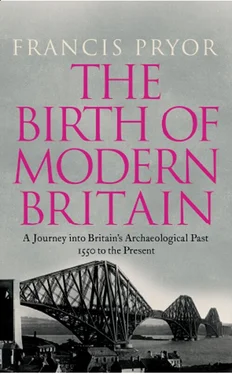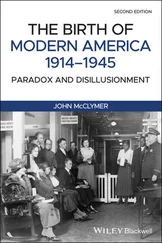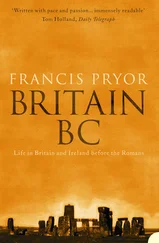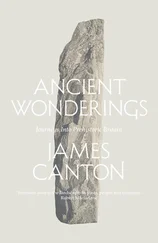But first, a few words on garden history and archaeology which over the past thirty or so years have become sub-disciplines in their own right. 3 One of their spin-offs has been the movement to restore old or overgrown parks and gardens to something approaching their former glories. This in turn has led people to research into more abstract subjects, like Georgian aesthetics and attitudes to landscape, because you cannot attempt sympathetic restoration without appreciating the subtleties of what the original gardeners and landscape designers were trying to achieve. 4 There have been a number of major excavation projects like those by Brian Dix, at Hampton Court Palace, or the great ruined Jacobean house at Kirby Hall, Northamptonshire, which have subsequently been followed by the restoration of entire formal gardens. 5 Garden archaeology has established itself as a subdiscipline in its own right. These highly specialised digs make extensive use of historical documents, and a variety of clever procedures, such as the meticulous plotting of the many rusted nails used to join the edging boards of long-lost flowerbeds.
As a general rule, many of the features revealed by garden archaeologists can be very slight. Although they are from a much earlier period, I’m put in mind of the shallow trenches dug for the elaborate box hedges at the palatial Fishbourne Roman villa in Sussex. 6 Very similar traces have been found at the two sites just mentioned, Hampton Court and Kirby Hall. In many instances even these slight remains can be detected without putting a spade in the ground, through the use of various geophysical surveys.
Put simply, geophysics involves the use of highly sophisticated machines which are wheeled, dragged or lifted across the ground, and in the process record certain aspects of what lies beneath the surface. 7 Resistivity meters measure minute fluctuations in the soil’s ability to conduct an electrical charge; magnetometers can detect tiny changes in the local magnetic field. Both techniques can reveal buried wells, post holes, ditches and walls.
Recently an entirely new generation of machines has come into being. Known as GPR, or ground penetrating radar, these instruments detect the way that radio waves are distorted and reflected back to a receiver on the surface. GPR plots a succession of buried layers and can penetrate deep into the ground. A particularly useful geophysical technique to industrial archaeologists is known by the rather unlovely name of magnetic susceptibility sampling, or ‘Mag Sus’ for short. Mag Sus can detect areas of magnetic enhancement caused by burning and can provide a fairly accurate indication of the temperatures involved – so it can readily distinguish, for example, between a bonfire and a furnace. More to the point, its results are instantaneous.
The rapid development of fast, lightweight, portable computers has revolutionised geophysics. When I began in archaeology in the early 1970s, I would routinely have to wait a week or a fortnight for my survey reports. Today it’s usual to have finished results in an hour or two. Indeed, when filming for Time Team , our resident geophysicist, Dr John Gater, has been known to produce an accurate printout in minutes.
Although, of course, they are deeply wonderful (and France, for example, is full of them), I have to say I don’t find strictly formal gardens very attractive, largely, I suppose, because I can imagine myself spending weeks and weeks meticulously trimming pyramids of box hedging and quietly going mad in the process. My own favourite restored garden is the one at Painshill in Surrey, which was originally laid out by Charles Hamilton between 1738 and 1773. 8 As at Stourhead, visitors perambulate around a great lake and are treated to a series of contrived views which include the usual colonnaded temples and a magnificent Turkish tent, successfully and imaginatively re-created in fibreglass. Perhaps the greatest feat of restoration at Painshill involved the rebuilding of a fanciful watery grotto, complete with side chambers, waterfalls and glittering crystal spar stalactites.
Today it is true to say that gardens are places of beauty and pleasure, but they have largely ceased to be instruments of political advancement and even intrigue. While most gardens were indeed permanent fixtures, some were created for a specific purpose, often the visit of a monarch and his or her court, and were always intended to be temporary – rather like the show gardens at Chelsea. Much controversy has recently been caused by the reconstruction at Kenilworth Castle in Warwickshire of such a temporary garden, created by Robert Dudley, Earl of Essex, to impress Elizabeth I when she made a two-week visit there for nineteen days, between 9 and 27 July 1575. Dudley, of course, is famous for being the Queen’s favourite and we can only imagine what might have been his true motives for creating such a magnificent showpiece, which cost English Heritage the eye-watering sum of £2,100,000 to reconstruct, largely on the basis of a sketch and a single, albeit detailed, eyewitness letter. 9
The garden is now permanently open to the public and it does give visitors a good impression of the lengths that people were prepared to go to impress the Tudor court, although doubts remain as to the so-called ‘eyewitness’ letter, which may have been a contemporary spoof or satire on Dudley’s pretensions. But even if it was, one could argue that the garden it depicts might have been the sort of creation that would have been inspired by such a royal visit. On the other hand, there is some archaeological evidence to support it, such as the discovery by Brian Dix of fragments of a fountain similar to the one described in the letter. Taking all things together, I tend to accept that the garden was indeed constructed and I find the controversy, which has already generated at least one television documentary, fascinating. The modern re-creation was constructed just before the financial crisis and only six months later, in less profligate times, it now appears an excess. Doubtless the original garden impressed Her Majesty, but if I had been one of the impoverished tenants of the Dudley estate I might well have been rather less enthusiastic.
I have stated that I have no intention of attempting a history of designed landscapes, but it is worth pointing out that many books that approach the subject from an art historical background tend to ignore the complexity of what actually happened out there in the real world. Today garden fashions come and go with bewildering rapidity: a few years ago everyone was covering their lawns with pergolas and wooden decking, then they painted their garden furniture blue, and now one cannot step into even the smallest back garden without running the risk of toppling into a water feature. Much the same could be said about the past except that then taste was not dictated by television makeover programmes. Of course there were highly influential people, such as ‘Capability’ Brown or Humphrey Repton, whose general influence was widespread but there were also other, often complementary traditions, too.
Recently the landscape archaeologist and historian Tom Williamson has called for a more regional approach to garden archaeology. There is a natural tendency to sing the praises of a particular, often grand garden and to make it sound as if it stood in magnificent isolation, whereas in reality it was often surrounded by parks and horticultural creations of comparable quality. Tom has eloquently pointed out that the estates and homes of less grand, local landowners helped create regional traditions with a unique style all of their own. 10 It wasn’t just that earlier traditions remained popular with many people, but sometimes innovations, which the textbooks would have one believe were universally and rapidly adopted, actually failed to find acceptance in certain areas. For instance, the new and characteristically ‘English’ landscape parks of the second half of the eighteenth century failed to catch on in Hertfordshire, where formal plantings of avenues and rides were laid out in the 1760s at major houses such as Cassiobury, Ashridge and Moor Park. 11 Such geometric features belonged to an earlier era and went very much against the ‘natural’ spirit of landscape designers, such as Brown or Repton.
Читать дальше












